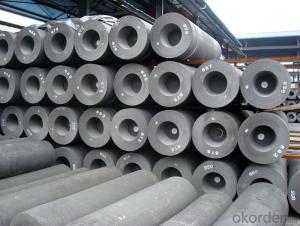Raw materials for cutting-edge graphite electrodes are a hot topic in the world of battery technology. These electrodes are the heart of modern batteries, powering everything from smartphones to electric vehicles. But what exactly are these raw materials, and why are they so important? Let’s dive into the fascinating world of graphite electrode production and explore the key ingredients that make these high-performance batteries possible.
Graphite, a form of carbon, is the star of the show when it comes to electrode materials. It’s lightweight, conducts electricity well, and has a high theoretical capacity for energy storage. But not all graphite is created equal. The quality of the graphite used in electrode production can greatly affect the performance and lifespan of the battery. So, where does this high-quality graphite come from?
Most of the world’s graphite supply comes from just a few countries, including China, Brazil, and India. These countries have rich deposits of natural graphite, which is mined and then processed into the high-purity graphite needed for battery electrodes. But mining graphite isn’t easy. It requires a lot of energy, water, and can have significant environmental impacts. That’s why many companies are looking for more sustainable ways to produce the graphite they need.
One such alternative is synthetic graphite, which is made from petroleum coke or coal tar pitch. This process is more energy-intensive than mining natural graphite, but it allows for greater control over the purity and structure of the final product. Synthetic graphite can also be recycled, which is a big plus for companies looking to reduce their environmental footprint.
Another important raw material in graphite electrode production is a binder. Binders are used to hold the graphite particles together and give the electrode its shape. There are many different types of binders available, each with its own advantages and disadvantages. Some common binders include polyvinylidene fluoride (PVDF), carboxymethyl cellulose (CMC), and styrene-butadiene rubber (SBR).
PVDF is a popular choice for lithium-ion batteries due to its excellent chemical stability and ability to form a strong bond with the graphite particles. However, it can be expensive and difficult to process. CMC, on the other hand, is a more cost-effective option that’s easy to work with but may not provide the same level of performance as PVDF. SBR is a good compromise, offering a balance of cost, processability, and performance.
Conductive additives are another key component in the production of graphite electrodes. These additives improve the electrical conductivity of the electrode, allowing for faster charging and discharging of the battery. Common conductive additives include carbon black, graphite powder, and various metal nanoparticles.
The choice of conductive additive can have a big impact on the overall performance of the battery. For example, carbon black is widely used due to its low cost and high conductivity, but it can also cause the electrode to expand and contract during charging and discharging, which can lead to a shorter battery life. Graphite powder is a more stable option, but it may not provide the same level of conductivity as carbon black. Metal nanoparticles, such as silver or copper, can offer exceptional conductivity, but they are also more expensive and can be challenging to incorporate into the electrode structure.
The final raw material we’ll discuss is the current collector. This is a thin layer of metal, usually copper or aluminum, that’s applied to the surface of the electrode to improve its electrical conductivity. The current collector helps to distribute the electrical charge evenly across the electrode, ensuring that the battery can be charged and discharged efficiently.
In conclusion, the production of cutting-edge graphite electrodes is a complex process that requires a careful balance of raw materials, processing techniques, and design considerations. From the sourcing of high-quality graphite to the selection of binders, conductive additives, and current collectors, every step of the process is critical to achieving the high performance and long lifespan that we’ve come to expect from modern batteries. As the demand for energy storage continues to grow, it’s clear that the development of advanced materials and production methods will play a crucial role in meeting this challenge.

